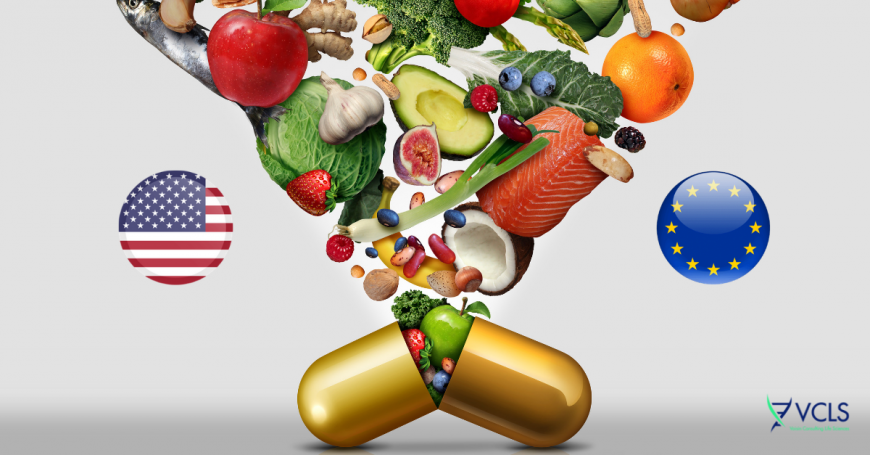The Microbiome Journey: Development of a Drug Product

Published on: Nov 29th, 2019
In a wide range of therapeutic areas, recent studies have highlighted the link between microbial imbalance (dysbiosis) and the development of certain diseases, such as allergies, cancer, asthma or gastro-intestinal diseases. Although the causality mechanisms are not always well understood, this relationship between microbiota and health suggest possible new solutions to tackle certain diseases. Consequently, innovative microbiome-based drugs can be developed from that perspective.
Regulatory statuses for microbiome drug products
When intended for treating or preventing the development of such diseases, microbiome-based products are much likely to be regarded as medicinal / drug products. They may fall under the definition of a drug product when they are intended for diagnosis or mitigation of a disease as well:
-
EU definition: “Any substance or combination of substances presented as having properties for treating or preventing disease in human beings […]”1
-
US definition: “Articles intended for use in the diagnosis, cure, mitigation, treatment, or prevention of disease in man or other animals […]”2
It should also be noted that a product can be a drug regardless of its intended use, because of its action on the body only. A product intended to affect a body’s structure or function is regarded as a drug product in the US2, and a medicinal product in the EU provided it acts by exerting a pharmacological, immunological or metabolic action1.
A product with a medicinal function can also be regulated as a biological product under certain circumstances. Microbiome-based products are particularly likely to be evaluated under this category of drug products. The application of biological product definition differs in the EU and in the US:
-
In the EU, the biological status depends upon the origin of its active substance: “produced by or extracted from a biological source […]”3
-
In the US, the biological status is irrespective of its source of origin, such as products analogous to a toxin or an antitoxin4. Biologics are isolated from a variety of natural sources – human, animal, or microorganism – and may be produced by biotechnology methods and other cutting-edge technologies.
Notably, a more specific category is recognized by the FDA, Live Biotherapeutic Products (LBPs). These products have more recently been officially integrated in the European Pharmacopeia
Marketing Authorisation procedures for microbiome drugs
In the EU, medicinal products can be authorized either by national competent authorities or by the EMA. Some of them such as those derived from biotechnology will go through compulsory Centralized Procedure with assessment performed by the EMA, which means that the approval is valid in the entire community under one single application. Products for which the centralized procedure is not mandatory can also consider other marketing authorisation procedures, such as National Procedure (for authorization in one EU country only), Decentralized Procedure (for simultaneous approval in a selection of countries) or Mutual Recognition Procedure (to extend an initial approval to the new EU Member States). The choice of the appropriate procedure will be based on the product’s intrinsic characteristics, therapeutic area, and commercial strategy.
In the US, the type of marketing authorization will directly depend on the nature of the product. A non-biological drug will be reviewed by the Centre for Drug Evaluation and Research (CDER), and a biological drug will be reviewed by the Centre for Biologics Evaluation and Research (CBER). The former will evaluate the product based on a New Drug Application (NDA) (abridged or not) and the latter on a Biologic License Application (BLA).
Specifics for the development and marketing of a microbiome drug
Special development pathways
Both EU and US regulatory authorities have established dedicated pathways to facilitate the development of certain types of drug / biological products. Microbiome products can be eligible for some of them.
For example:
-
A streamlined development program (US) can be used for antibacterial drugs for the treatment of serious bacterial infections in patients who have few or no available treatments. For example, a product with a “new mechanism of action that preserves antibacterial activity against bacteria that have mechanisms of resistance to other available antibacterial drugs”5 would be eligible for such program;
-
The Limited Population Pathway for Antibacterial and Antifungal Drugs (US) is also accessible to antibacterial or antifungal drugs intended to treat a serious or life-threatening infection in a limited population of patients with unmet needs;
-
Medicinal products that show potential to address an unmet medical need (major therapeutic advantage over existing treatments, a benefit to patients without treatment options) might be eligible to the PRIME Designation (EU).
Eligibility to such pathways and programs can provide significant advantages for the development of the microbiome drug with access to incentives such as enhanced interactions with the authorities and the possibility for accelerated assessment at the time of marketing application.
Special pathways for access to marketing authorizations
As microbiome drugs can provide new perspectives to tackle some diseases (including rare diseases and unmet medical needs), they can be recognized as a priority by the authorities. Therefore, the procedure for their marketing authorization might be simplified or adapted, via Fast Track, Breakthrough Therapy, Accelerated Approval or Priority Review in the US, and Accelerated Assessment Procedure, Conditional Marketing Authorization or Marketing Authorization under Exceptional Circumstances in the EU.
Some criteria to be eligible for these procedures are recurrent and include whether the targeted condition is serious, rare, is an unmet medical need, is considered as a “qualified” disease, or whether the microbiome product is expected to provide a meaningful advantage over current treatments. Eligibility depends also on the level of evidence provided by the applicant, on the quality of existing treatments and on the state of the scientific knowledge in the area. Special approval procedures can lead to significant benefits such as a shorter review timeline, regulator’s additional guidance, or approval with limited evidence.
Conclusion
The regulatory strategy for the development of a microbiome medicinal product should be developed in order to timely engage in the most appropriate pathways and make the most out of the product’s specificities. Defining its regulatory status (medicinal product/biologic/ LBP) will help to identify the type of approval to be obtained from the regulatory authorities. The product characteristics should also be considered with regard to special pathways to be applied in due time. Alternatively, a good understanding of these programs can help to sharpen the target product profile and guide its development. In all cases, early and recurrent interactions with the regulatory authorities all along the product development should not be underestimated as it will ensure a successful and timely market entry.
1- Directive 2001/83/EC relating to medicinal products for human use
2- 21 U.S. Code § 321
3- Directive 2003/63/EC amending Directive 2001/83/EC relating to medicinal products for human use
4- 21 CFR 600.3
5- FDA Guidance for Industry: Antibacterial Therapies for Patients With an Unmet Medical Need for the Treatment of Serious Bacterial Diseases

Questions? Get the answer by our expert team
No two product developments are the same, talk to our experts about your development challenges and we will provide your actional recommendations.
